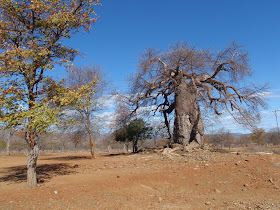I went to Zimabwe in August of 2011 to work with some local farmers on some irrigation schemes. They call them irrigation schemes if a group of farmers all use the same source for watering their fields. So for instance if the source of water is a river and there is a diversion from the river (can be a canal or a pump) then everyone getting water from that diversion would be on the same scheme.
Sometimes this is a very large main canal and if this main canal is split into two canals and the water can be diverted (forced to go into one or the other but not both at the same time) then each of these would be an irrigation scheme.
 |
| Hosted at the Bradshaw's house in Harare. Geoffrey was a fantastic guide in helping me work with local farmers |
Sometimes this is a very large main canal and if this main canal is split into two canals and the water can be diverted (forced to go into one or the other but not both at the same time) then each of these would be an irrigation scheme.
 |
| Using siphon eight siphon tubes to bring water from the lined canal to flood their onions |
So I worked with about 17 of these schemes with an average number of farmers of about 200 or so. I primarily worked with issues of "governance" surrounding these schemes (how is the water going to be managed and shared so that they all get an equal share?). But if you have never been to this part of the world then it is a treat.
The fields are irrigated on a rotational basis determined by when water is released to them by the government agency that controls water deliveries from surface sources such as rivers.
 |
| Baobob tree reaching estimated ages of 3,000 years old or more |
In southern Africa there is a tree that is quite remarkable called the Baobab or Baobob. I prefer to call it Baobob because it reminds me of me. Locals use it for as a food source by opeing the fruit (kind of dry on the inside) and sucking on the seeds. Kind of a citrusy flavor if you suck on the semi-dry pulp surrounding the seed.
It is normally found in the drier regions of the country, regions such as IV and V. The outer bark can be removed multiple times from the trees without apparent damge to them and this is then woven into mats and used in the homes or the mats are sold along the roads to people passing by, usually tourists.
It is normally found in the drier regions of the country, regions such as IV and V. The outer bark can be removed multiple times from the trees without apparent damge to them and this is then woven into mats and used in the homes or the mats are sold along the roads to people passing by, usually tourists.
 |
| Fruits of the baobob which has a pretty dry pulp on the inside but sucking on the seeds and the surrounding pulp of the seeds reveals kind of a pleasand citrusy taste |
 |
| The outer bark is removed from baobob, woven and used for making mats for flooring and sold along the roads |
No comments:
Post a Comment